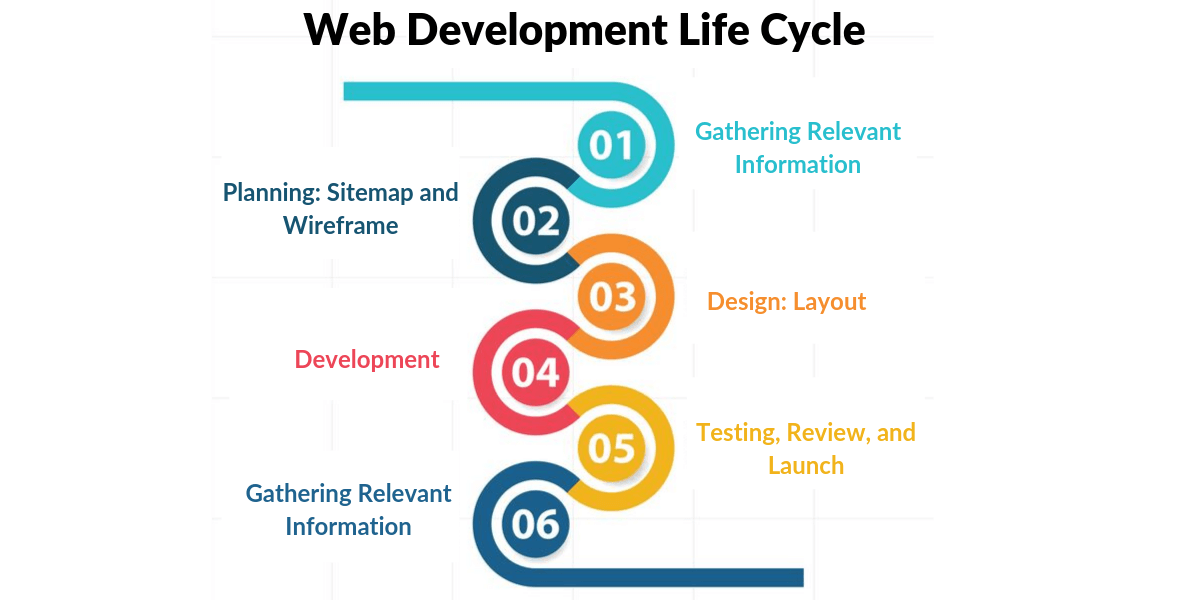How to Get the Best Life Insurance Quotes for Your Family's Financial Security
hen it comes to life insurance, choosing the right type can be pivotal in ensuring financial security for your loved ones.
When it comes to life insurance, choosing the right type can be pivotal in ensuring financial security for your loved ones. Two of the most common types are term life insurance and whole life insurance. Each has distinct features, benefits, and potential drawbacks. Here’s a detailed comparison to help you understand which might be the best fit for your needs.
Term Life Insurance
Term life insurance is designed to provide coverage for a specific period, or "term," such as 10, 20, or 30 years. If the insured person passes away during this term, the policy pays out a death benefit to the beneficiaries. If the term expires and the insured is still alive, the coverage ends, and there is no payout.
Key Features of Term Life Insurance:
- Affordability: Generally, term life insurance is more affordable than whole life insurance. Premiums are lower because you are only paying for coverage for a limited time and not accumulating any cash value.
- Simplicity: Term life insurance is straightforward with fewer variables. It is a good option if you want a clear, simple policy.
- Flexible Terms: You can choose a term length that suits your needs, such as until your children are grown or your mortgage is paid off.
Why Choose Term Life Insurance?
- Cost-Efficiency: For young adults and families seeking affordable life insurance options, term life insurance offers substantial coverage at a lower cost compared to other types of policies.
- Short-Term Needs: Ideal for specific financial responsibilities that may diminish over time, such as mortgage protection or funding a child’s education.
- High Coverage Amounts: Because premiums are lower, you might afford a larger policy amount compared to what you could with whole life insurance.
Whole Life Insurance
Whole life insurance provides coverage for the insured's entire lifetime, as long as premiums are paid. It combines a death benefit with a savings component known as cash value.
Key Features of Whole Life Insurance:
- Lifetime Coverage: As long as you keep up with your premiums, whole life insurance covers you for your entire life, providing peace of mind and long-term financial security.
- Cash Value Accumulation: Part of your premium goes towards building cash value, which grows over time and can be borrowed against or used to pay premiums.
- Fixed Premiums: Premiums are generally fixed and do not increase with age, providing stable, predictable costs.
Why Choose Whole Life Insurance?
- Permanent Coverage: If you seek a policy that offers lifelong protection and final expense insurance, whole life insurance ensures that your beneficiaries receive a death benefit regardless of when you pass away.
- Cash Value: The cash value component can be used for emergencies, retirement, or as a savings tool. This can be particularly advantageous for life insurance for high-net-worth individuals or those looking for a versatile policy.
- Estate Planning: Whole life insurance is often used for estate planning, providing funds to cover estate taxes and ensuring that your wealth is passed on according to your wishes.
Term Life vs. Whole Life: Key Considerations
-
Cost: If affordability is your main concern, term life insurance typically offers the most coverage for the least amount of money. It’s ideal for those looking for affordable life insurance.
-
Purpose: Term life insurance suits those needing coverage for a specific period, like raising children or paying off a mortgage. Whole life insurance is more suited for those seeking lifelong coverage and a savings component.
-
Cash Value: Whole life insurance offers a cash value component that can be beneficial in the long run, but this comes at a higher premium cost. For those who value savings and investment, this can be an attractive feature.
-
Flexibility: Term life insurance is more flexible in terms of policy length and coverage amount adjustments, whereas whole life insurance provides a consistent, lifelong benefit.
Choosing the Right Policy
Selecting between term life insurance and whole life insurance depends on your financial goals, coverage needs, and budget. To make an informed decision, consider using a life insurance calculator to compare life insurance rates and life insurance policies. Additionally, obtaining life insurance quotes from multiple providers can help you find the best options tailored to your specific needs.
For those in cities like Pittsburgh, San Antonio, Baltimore, Columbus, and Portland, it's also wise to consult with life insurance agents near me who can provide personalized advice and ensure you get the best life insurance for your circumstances. Whether you need life insurance for seniors, life insurance for children, or coverage for business owners and freelancers, the right policy can significantly impact your financial security and peace of mind.
By carefully weighing the benefits and limitations of each type, you can choose a policy that aligns with your financial strategy and provides the protection you need for yourself and your loved ones.
Essential Factors in Choosing a Term Life Insurance Policy
When it comes to securing a term life insurance policy, there are several crucial factors to consider to ensure you select the best coverage for your needs. This guide will help you navigate these factors, including coverage amount, length of term, and premium costs, while incorporating relevant life insurance quotes, best life insurance options, and various other aspects of life insurance policies.
1. Coverage Amount
The coverage amount, or death benefit, is the sum of money that your beneficiaries will receive upon your death. This is arguably the most important aspect of any life insurance policy.
- Assessing Needs: To determine the appropriate coverage amount, consider your financial obligations and goals. This includes mortgage payments, outstanding debts, educational expenses for children, and income replacement.
- Life Insurance Calculator: Utilize a life insurance calculator to estimate the coverage amount you need based on your financial situation and future goals. These calculators take into account your current income, debts, and other financial commitments to provide a tailored recommendation.
2. Length of Term
The length of term refers to the duration for which the policy will provide coverage. Term life insurance is designed to offer protection for a specified period, typically ranging from 10 to 30 years.
- Choosing the Right Term: Select a term that aligns with your long-term financial responsibilities. For example, if you are securing a policy to cover your children’s education, you might choose a term that lasts until they graduate. Conversely, if you’re looking to cover a mortgage, the term should align with the mortgage duration.
- Flexibility: Some policies offer the option to convert to whole life insurance or extend the term at the end of the initial period. This can be beneficial if your needs change over time.
3. Premium Costs
Premium costs are the amount you will pay periodically for your term life insurance policy. These costs can vary significantly based on various factors.
- Affordability: It’s important to select a policy with premiums that fit comfortably within your budget. Affordable life insurance options are available, but be mindful of what is included in the coverage.
- Premium Factors: Premiums are influenced by factors such as your age, health, lifestyle, and coverage amount. For example, life insurance for smokers or individuals with health conditions like diabetes may have higher premiums.
4. Health and Lifestyle Considerations
Your health and lifestyle can impact both the cost of your premiums and the type of coverage available to you.
- Medical Exam: Some policies require a medical exam, while others offer no medical exam life insurance. If you have specific health concerns, such as diabetes or a high-risk occupation, this might be a crucial consideration.
- Guaranteed Issue Life Insurance: For individuals with significant health issues, guaranteed issue life insurance might be an option. This type of policy doesn’t require medical underwriting but may come with higher premiums and lower coverage amounts.
5. Policy Benefits and Features
Different life insurance policies come with various benefits and features that can affect your decision.
- Riders and Add-Ons: Consider whether the policy offers additional features such as life insurance with living benefits or final expense insurance. These can provide extra protection or benefits while you are still alive.
- Conversion Options: Look for policies that allow you to convert to whole life insurance or adjust the term if your needs change.
6. Life Insurance Comparison
Comparing different life insurance policies and providers is essential to finding the best coverage for your needs.
- Life Insurance Quotes: Obtain and compare life insurance quotes from multiple providers to ensure you are getting competitive rates and the best coverage.
- Best Life Insurance Companies: Research the best life insurance companies based on customer service, policy options, and financial stability. Reading reviews and consulting with life insurance agents near me can provide valuable insights.
7. Targeted Insurance Needs
Specific groups might have unique needs that influence their choice of policy.
- Life Insurance for Families: If you are securing insurance for your family, consider the long-term needs and potential changes in your financial situation.
- Life Insurance for Business Owners: For business owners, policies that offer coverage for business-related risks can be important.
- Life Insurance for High Net Worth Individuals: This group may need policies that address estate planning and wealth transfer.
8. Additional Considerations
- Life Insurance for Seniors and Children: Different policies cater to life insurance for seniors or life insurance for children. Each comes with specific terms and benefits.
- Specialty Coverage: For individuals with specific needs, such as life insurance for veterans or life insurance for critical illness, find policies tailored to those requirements.
Selecting a term life insurance policy involves evaluating several key factors including coverage amount, length of term, and premium costs. By using a life insurance calculator to determine your needs, comparing life insurance quotes, and considering specialized options such as guaranteed issue life insurance or no medical exam life insurance, you can make an informed decision. Whether you are in Pittsburgh, San Antonio, Baltimore, Columbus, or Portland, finding the right policy ensures you and your loved ones are protected.
Determining the Right Amount of Coverage for a Term Life Insurance Policy
Choosing the right amount of coverage for a term life insurance policy is crucial to ensure financial security for your loved ones. Determining this amount involves considering several factors, including your income, debt, and future expenses. Here’s a comprehensive guide on how to calculate the appropriate coverage, integrating key concepts and terms related to term life insurance.
1. Assessing Your Financial Needs
Income Replacement: One of the primary reasons for purchasing term life insurance is to replace lost income in the event of your death. A common rule of thumb is to have coverage that is 10 to 15 times your annual income. This ensures that your beneficiaries can maintain their standard of living and cover essential expenses.
For example, if your annual income is $60,000, you might consider a policy with a death benefit of $600,000 to $900,000. This estimate can be adjusted based on specific needs and lifestyle.
Debt Coverage: Calculate the total amount of your outstanding debts, including mortgages, car loans, and credit card balances. The coverage amount should be enough to pay off these debts, relieving your family from financial burdens during a challenging time.
Future Expenses: Consider the future expenses that your family might incur, such as education costs for children, retirement savings for a spouse, or any other significant financial commitments. Adding these expenses to your coverage calculation ensures that your loved ones will be financially secure.
2. Using Tools and Resources
Life Insurance Calculator: Utilizing a life insurance calculator can help you estimate the amount of coverage needed based on your specific financial situation. These calculators typically ask for details such as your income, debts, and future expenses to provide a personalized estimate.
Life Insurance Quotes: Comparing life insurance quotes from different providers helps you find the best coverage at the most affordable rates. Quotes will vary based on factors like age, health, and lifestyle, so it’s important to get several estimates to find the right policy.
Guaranteed Issue Life Insurance: For those with health concerns, guaranteed issue life insurance might be a suitable option. This type of policy does not require a medical exam, but it typically comes with higher premiums and lower coverage amounts.
3. Considering Different Types of Life Insurance
Term Life Insurance vs. Whole Life Insurance: Term life insurance provides coverage for a specified period (e.g., 10, 20, or 30 years) and is generally more affordable than whole life insurance, which offers coverage for your entire lifetime and includes a cash value component. Depending on your needs, term life insurance might be more suitable for those seeking a straightforward, cost-effective solution.
Universal Life Insurance: Universal life insurance offers flexible premiums and death benefits, which can be adjusted over time. This can be a good option if you need flexibility in your coverage and premium payments.
4. Tailoring Coverage to Specific Needs
Life Insurance for Families: If you have dependents, such as a spouse or children, ensuring adequate coverage is essential. Life insurance for families helps protect your loved ones from financial strain and provides for their future needs.
Life Insurance for Business Owners: For business owners, life insurance for business owners can provide coverage to protect the business and ensure that it continues to operate smoothly in your absence. This can include buy-sell agreements or key person insurance.
Life Insurance for Seniors and Other Special Groups: Life insurance for seniors and individuals with specific needs, such as life insurance for diabetics or life insurance for smokers, may have different requirements and pricing. Be sure to compare policies and consult with an agent who understands these specific needs.
5. Planning for the Future
Final Expense Insurance: Final expense insurance covers the costs of funeral and burial expenses. While it might not replace income or cover debts, it ensures that these expenses are taken care of without placing a financial burden on your family.
Life Insurance for Estate Planning: If you have significant assets, life insurance for estate planning can help cover estate taxes and ensure that your estate is distributed according to your wishes without financial complications.
Life Insurance with Living Benefits: Some policies offer life insurance with living benefits, which allows you to access a portion of your death benefit while still alive in case of a terminal illness. This can provide additional financial support during critical times.
6. Working with Insurance Professionals
Life Insurance Agents Near Me: Consulting with life insurance agents near me can provide personalized assistance in selecting the right policy. These professionals can help you navigate the different options available and ensure you get the best coverage for your needs.
Life Insurance Comparison: Make use of life insurance comparison tools to evaluate various policies and providers. This process helps you identify the best life insurance companies and find coverage that fits your budget and requirements.
Determining the right amount of coverage for a term life insurance policy involves assessing your financial needs, using available tools and resources, and considering different types of life insurance policies. By calculating your income replacement needs, debt coverage, and future expenses, you can choose a policy that ensures financial security for your loved ones. Consulting with a knowledgeable agent and comparing quotes will help you find the most affordable and suitable coverage. For residents of Pittsburgh, San Antonio, Baltimore, Columbus, and Portland, there are many resources available to assist in finding the right policy.
Top Benefits of Term Life Insurance for Young Families
Term life insurance can be an essential financial tool for young families, offering a range of benefits during pivotal life stages. With its affordability and flexible coverage options, this type of insurance is a prudent choice for securing financial stability. Here’s a detailed look at why term life insurance is especially advantageous for young families.
1. Affordability
One of the most compelling benefits of term life insurance is its cost-effectiveness. Compared to whole life insurance, which provides coverage for the insured’s entire lifetime and includes a cash value component, term life insurance is generally much more affordable. For young families, especially those managing the expenses of raising children or buying a home, affordable life insurance is a practical choice. With life insurance quotes readily available online, families can easily compare life insurance rates and find a plan that fits their budget.
2. Flexible Coverage Periods
Term life insurance offers various term lengths, typically ranging from 10 to 30 years. This flexibility allows families to select a policy that aligns with their financial goals and life stages. For instance, a young couple might choose a 20-year term to cover the period while their children are growing up and their mortgage is being paid off. By doing so, they ensure that their loved ones are financially protected during these critical years.
3. Financial Protection for Dependents
Young families often have dependents who rely on their income for support. Term life insurance provides a death benefit that can replace lost income and cover essential expenses such as mortgage payments, childcare, and education costs. This ensures that in the event of the policyholder’s untimely death, their family’s financial needs are met without disrupting their lifestyle.
4. Simple and Straightforward
Unlike whole life insurance or universal life insurance, which come with complex investment components, term life insurance is straightforward. It offers a death benefit if the insured passes away within the term of the policy. This simplicity can be appealing to young families who want to focus on the essential aspects of their financial planning without the added complexity of investment or savings components.
5. Coverage for Key Life Stages
Young families often encounter significant financial commitments, such as purchasing a home or saving for their children’s education. Term life insurance can provide peace of mind during these key life stages by ensuring that the policyholder’s family will be financially secure if the unexpected occurs. For example, a policy with a term that coincides with the mortgage duration can offer protection for the home’s outstanding balance, preventing financial strain on the surviving family members.
6. Ability to Convert to Permanent Insurance
Many term life insurance policies come with a conversion option, allowing policyholders to convert their term policy into a whole life insurance or universal life insurance policy without undergoing a medical exam. This feature can be beneficial for young families as their financial situation evolves. If their needs change or they wish to switch to permanent coverage, they have the flexibility to do so.
7. Customizable Coverage Amounts
Term life insurance allows families to choose a coverage amount that aligns with their needs. Using a life insurance calculator, families can estimate the coverage amount required to protect their financial obligations and goals. Whether it’s to cover debts, educational expenses, or other financial commitments, term life insurance offers customizable solutions.
8. No Medical Exam Options
For families who may have health concerns or prefer a more straightforward application process, some term life insurance policies offer no medical exam life insurance options. This means that applicants can secure coverage without undergoing a medical exam, streamlining the process and making it easier to obtain protection.
9. Peace of Mind
The primary benefit of term life insurance is the peace of mind it provides. Knowing that their family is protected financially if something were to happen gives policyholders reassurance. This peace of mind is invaluable, particularly for young families navigating the complexities of starting and raising a family.
10. Potential to Save on Premiums
Term life insurance premiums are generally lower than those for whole life insurance or universal life insurance. This allows families to allocate their resources more effectively, potentially saving on premiums while still obtaining essential coverage. By choosing affordable life insurance, families can keep their costs manageable while ensuring their loved ones are protected.
For young families, term life insurance offers a range of benefits, from affordability to flexible coverage periods. It provides essential financial protection during key life stages, ensuring that dependents are cared for and financial obligations are met. By comparing life insurance quotes and selecting a policy that fits their needs, families can enjoy the security and peace of mind that comes with having a well-structured insurance plan. Whether you are in Pittsburgh, San Antonio, Baltimore, Columbus, or Portland, finding the right term life insurance can be a crucial step in securing your family’s financial future.
Common Misconceptions About Term Life Insurance Debunking Myths and Clarifying Benefits
When it comes to choosing a life insurance policy, term life insurance often faces misunderstandings. Despite its simplicity and cost-effectiveness, misconceptions can deter people from considering it. In this article, we’ll debunk common myths about term life insurance, clarify how it works, who it’s ideal for, and why it might be a smart choice for many.
Understanding Term Life Insurance
Term life insurance is a straightforward type of life insurance that provides coverage for a specific period, or "term," such as 10, 20, or 30 years. If the insured passes away during this term, the policy pays out a death benefit to the beneficiaries. If the term expires while the insured is still alive, the coverage ends, and no benefit is paid out.
Common Misconceptions About Term Life Insurance
1. "Term Life Insurance Is a Waste of Money"
One of the biggest misconceptions about term life insurance is that it's a waste of money because it only pays out if the insured dies during the term. However, this view overlooks its primary advantage: affordability. Term life insurance typically offers much lower premiums compared to whole life insurance or universal life insurance, making it an economical choice for those who need substantial coverage without breaking the bank. For example, if you’re searching for affordable life insurance, term policies often provide the best value.
2. "Term Life Insurance Doesn’t Offer Any Long-Term Benefits"
Some believe that term life insurance doesn’t have long-term benefits. While it’s true that term policies don’t build cash value like whole life insurance, they can be ideal for temporary needs such as covering a mortgage, supporting young children, or providing for a spouse. When comparing life insurance policies, term insurance can be a smart choice if your primary goal is to ensure financial protection for a specific period.
3. "You Can’t Convert Term Life Insurance to a Permanent Policy"
Another myth is that you can't convert a term policy to a permanent one. In reality, many term life insurance policies offer a conversion option. This means you can switch to a whole life insurance or universal life insurance policy without undergoing a new medical exam. This flexibility is particularly useful if your insurance needs evolve over time.
4. "Term Life Insurance Is Only for Young, Healthy Individuals"
Term life insurance is often perceived as suitable only for young, healthy people. However, it can be beneficial for a wide range of individuals. Life insurance for seniors and those with health conditions can also find term policies that fit their needs, especially with options like guaranteed issue life insurance and no medical exam life insurance.
5. "Term Life Insurance Is Too Complicated"
Some think term life insurance is too complicated to understand. In truth, term life insurance is one of the simplest forms of coverage. It provides clear terms: a set period of coverage with a straightforward death benefit. This simplicity can make it easier to manage compared to more complex life insurance policies.
Who Is Term Life Insurance Ideal For?
1. Young Adults and New Parents
For young adults and new parents, term life insurance can offer vital financial protection at a low cost. It ensures that if something happens, their dependents will be taken care of. This is particularly useful for those looking for life insurance for families without the higher premiums of permanent policies.
2. Homeowners and Business Owners
Term life insurance is a great choice for homeowners and business owners. It can cover mortgage payments or business loans, providing peace of mind that their obligations will be met even in their absence. Life insurance for mortgage protection and life insurance for business owners are key reasons why term policies are beneficial.
3. Those Looking for Short-Term Coverage
If you need coverage for a specific period, such as while children are dependent or while paying off significant debts, term life insurance is an excellent fit. It offers substantial coverage at a lower cost, which can be more affordable than permanent policies.
Why Term Life Insurance Might Be a Smart Choice
1. Cost-Effectiveness
One of the most compelling reasons to choose term life insurance is its cost-effectiveness. Compared to whole life insurance or universal life insurance, term policies generally offer lower premiums for a comparable amount of coverage. This makes them an attractive option for those seeking affordable life insurance.
2. Flexibility
Many term life insurance policies come with options to convert to permanent coverage or to renew at the end of the term. This flexibility allows policyholders to adapt their coverage as their needs change over time.
3. Simplicity
The straightforward nature of term life insurance makes it easy to understand and manage. For those new to life insurance or looking for a simple solution, term policies offer a clear and uncomplicated choice.
4. Customization
Term life insurance can be tailored to fit various needs and durations. Whether you're seeking coverage for a specific period or looking for life insurance comparison options to find the best fit, term policies can be adjusted to meet your requirements.
In summary, term life insurance is often misunderstood, but it can be a highly effective and economical choice for many. Debunking these common myths reveals the true benefits of term policies. Whether you're considering life insurance quotes for young adults, affordable life insurance options for seniors, or simply want to ensure coverage during a critical time, term life insurance offers a valuable solution. When comparing life insurance rates and policies, it’s clear that term life insurance holds significant advantages for those seeking effective, cost-efficient coverage.
What's Your Reaction?





















